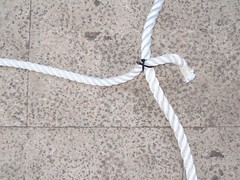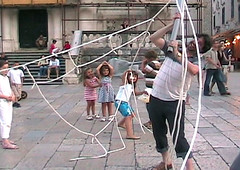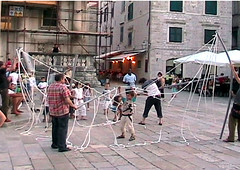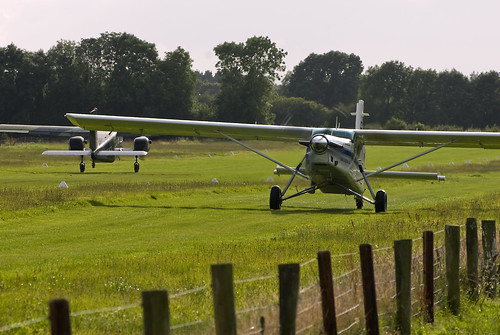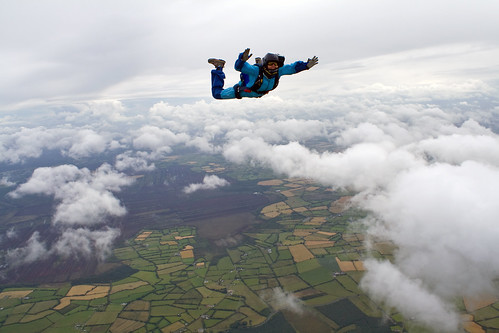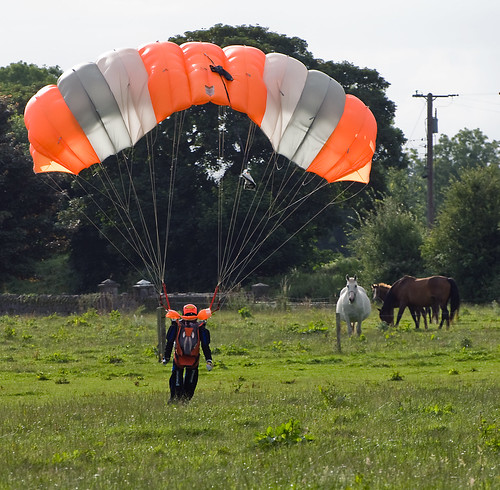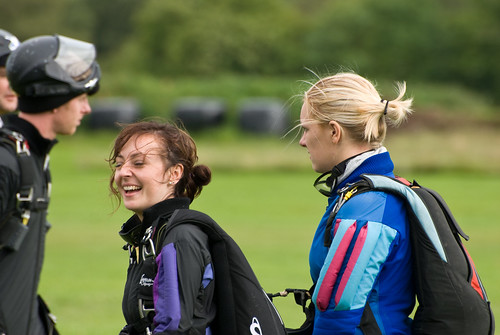I was worried about podcasting. I had attempted it a couple of times and couldn't get my microphone to work. Adding to that fear, I had read a couple of comments my classmates made about the difficulties they were having embedding their podcasts in their blog. I could have read my classmates' blogs to see the path they took to learn about podcasting, but I didn't have the time. I took my shortest path on the technical aspect...I asked someone I knew could do it.
I am fortunate to work with a great tech teacher. He looked at the settings on my Audacity (a tool for recording and editing sound - it needed to be downloaded and installed on my computer)and found the microphone setting was incorrect; it had defaulted to my web cam microphone. This was an easy fix (if you know what to look for - which I did not, but my tech teacher friend did). He lent me a microphone headset and sent me on my way with my now functioning Audacity.
This time when I sat down to record, the process went very smoothly. The recording worked the first time. I then uploaded my recording to PodOmatic. This is a web based program and was a very easy program to use. I simply chose the My Podcast tab, chose Post an Episode from the drop down box, and the screen took me through uploading and publishing the audio. I was able to create a link to my test recording which I easily published in my blog. I was also able to embed a player into my blog. This is the embedded player:
I then proceeded to upload music to Audacity. I was able to create layers to the voice recording.
Each layer can be edited individually. In my workshop with Bernajean Porter (DigiTales - The Art of Telling Digital Stories), I learned about balancing the music and voice, so I adjusted the background music to a lower volume than I normally would have. The result of my second attempt with Audacity was a vocal with a soft music background. I used a copyright free provider, Freeplay Music. (I use this same Audacity recording in my next example where I have enhanced the podcast with visuals, so wait for the next player to listen to the entire podcast!)
Having successfully published this podcast, I wanted to venture into the enhanced podcast I had learned about in Bernajean Porter's workshop. I proceeded to Windows Live Movie Maker 2011 and installed the program on my computer. I created the following enhanced podcast within half and hour, even with my experimentation of the various visual effects. It was extremely easy to upload my audio and pictures (I could have uploaded video as well). I played around with some visual effects, added a title, cast and location slides, and the final credits. I saved and then published to YouTube.
This was the process. As Will Richardson states in Blogs, wikis, podcasts, and other powerful web tools for classrooms, podcasting can be as simple or as complex as you want to make it (2010, p. 117), but it isn't really all that complicated. While my stress level was high trying to work out the technical issues, once the microphone and the programs were in place, I had more fun that frustration.
Personal Podcasting
I had not looked into podcasting for personal use previous to this week. I had listened to a podcasts for my course, but I can't think of time outside of my class that I had listened to a podcast. However, I am now envisioning the role it will play in my personal life.
I began by looking through iTunes Podcasting. There are many podcasts to choose from in all areas of interest. iTunes also includes information about creating, publishing, and subscribing to podcasts - something I had not considered doing previously.
I like the idea of enhanced podcasting to create Storykeepers (or digital stories) - stories about memorable moments in my life and the lives of others around me. Bernajean Porter stated, to be digital storytelling rather than just a digital story, the piece needs to include several factors, one of them being emotion. The use of music, sound effects, pictures, music and other visual effects also tell the story; each piece is necessary. She estimates it takes about 20 hours to create one digital story, consisting of 250 to 500 words. The written preparation is where much of the time is spent - the piece is written to be presented as a podcast.
I have many stories and pictures I want to share with my family. I envision creating some keepsakes - narratives of my parents' lives, my children's accomplishments, and shared memories. The one example Bernajean shared was of a digital story she had created for a friend who was retiring. She had interviewed his mother, capturing stories of his youth. It was beautiful. However, the true value of the gift was evident when we learned his mother had passed away a few months before the retirement, and this had become an invaluable keepsake for this man. It was the one time in his life he had heard his mother speak openly of her love for him. It was captured for eternity, had been published and shared - the essence of podcasting.
I would also use this to record my children. As my youngest learns to speak, I would like to capture some of these moments to preserve (they pass by so quickly).
My children are in French Immersion. They bring home little books they made at school to practice. They would love to read their stories and save them as a podcast, and it would encourage them to practice their reading.
My son practices his spelling words by writing them over and over (this is his assigned homework). He isn't very fond of that activity, however, I'm sure he would enjoy spelling the words into the recording and listening to them while he checks for accuracy.
I could leave instructions on how to cook certain recipes for my oldest daughter. She would then be able to take these recipes with her on her iPod (since she is always listening to it when she cooks anyhow).
I could also subscribe to podcasts in topic areas I am interested in. As a kid, I loved listening to radio shows. However, they were only on a certain channel at a specific time. We didn't catch them very often. However, I could subscribe to shows such as MPIR Old Time Radio, which are radios shows from the 30s, 40s and 50s (I'm not that old, but love the stories from that era). I was able to subscribe to the Oiler's Hockey Show to help me follow the Oiler's hockey season (I'm hopeful for them). Any time a new show is published, it goes directly to my reader and/or my iTunes account. I had no idea the world of podcasts was so interesting and exciting!
Professional uses for Podcasting
Podcasting can also be used in the classroom. One collegue of mine has used podcasting in social studies. He had the students create summary notes from chapters, including artwork and key information in their enhanced podcasts.
Another collegue uses iTunes audio books in her classroom as another way to read a novel study. Students love listening to the book via the FM system - it is like surround sound in a movie theatre, and they can follow along in their books.
As mentioned above, students could use podcasting to practice foreign languages, read stories to publish and share with others and to subscribe to topics they are studying or interested in. Colette Cassinelli shares some uses of podcasting in her YouTube video.
Another collegue uses iTunes audio books in her classroom as another way to read a novel study. Students love listening to the book via the FM system - it is like surround sound in a movie theatre, and they can follow along in their books.
As mentioned above, students could use podcasting to practice foreign languages, read stories to publish and share with others and to subscribe to topics they are studying or interested in. Colette Cassinelli shares some uses of podcasting in her YouTube video.
Will Richardson suggested a few of his favorite sites (2010, pp. 112-121). These sites provide examples of people who are podcasting personally, or more professional sites used for professional resources and/or professional development. An interesting site was The Educational Podcast Network. There are a number of podcasts for all grade levels and in many areas of the curriculum. One such example is The Radio Adventures of Dr. Floyd Official Podcast: Episode #813 "Where it all Ends...Again!". It reminds of the radio shows I listened to as a child. This is another genre to introduce our students to, and is a great resource for the classroom.
Again, I found numerous professional podcasts to follow. I subscribed to podcasts ranging from technology and SmartBoards to student podcasts. What I loved about iTunes was as I subscribed to one podcast, other suggestions linked to that topic appeared on the bottom of my subscription page. In minutes I found several podcasts for professional development and several for use in the classroom. I was very excited to find numerous podcasts on Halloween - radio shows the students in my class would find entertaining and different from the materials we usually work with. I also found some video podcasts about cooking - a fantastic resource for my Foods 8 class. Not only can I show the videos, but I can show students how to use iTunes to help them in the kitchen.
Podcasting is more than I thought it was - which was just a digital recording. As Richardson indicates, it is the distribution of it that is important (2010, p. 112). Because of the ease of producing and posting to the web, along with the RSS feeds, using podcasts for personal and professional use is very accessible. It is amazing the amount of information that is out there waiting to be shared via podcasting - I had no idea until this week!
References
Cassinelli, C. (2007). Integrating podcasting into your classroom. Retrieved from http://www.youtube.com/watch?v=ExkMeQfuLGc.
Common Craft, (2010). Podcasting in plain english, retrieved from http://www.commoncraft.com/podcasting.
Richardson, W. (2010). Blogs, wikis, podcasts and other powerful web tools for classrooms. Thousand Oaks, CA: Corwin











